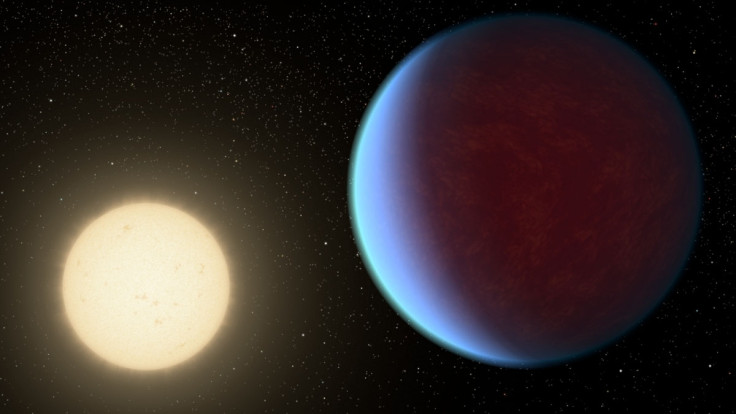Super-Earth 55 Cancri e might have an atmosphere like ours
The exoplanet is located around 40 light years away from the Earth.

A super-Earth, located about 40 light years away, might have an atmosphere with characteristics similar to that of our own planet, according to a study published in The Astrophysical Journal.
Exoplanet 55 Cancri e is twice as big as the Earth, but essentially it is a world where lava from volcanoes and fissures is thought to be flowing all around. It is located extremely close to its parent star. So close that it not only completes one orbit in 18 hours but also remains tidally locked, with one of its side perpetually facing the star and other facing away.
The side facing away always remains cold and in complete and utter darkness, while the other side stays hot and lit
Now, using 55 Cancri e data captured by Spitzer space telescope in 2013, researchers have determined that the temperatures on the 'cold side' revolve around a whopping 1,300-1,400 degree Celsius, which is still scorching by Earth's standards.
The hot side goes to a nightmarish 2,300 degree Celsius.
According to the paper, the exoplanet manages to retain and circulate this heat as it bears a thick layer of the atmosphere. If it had no atmosphere, the difference between the two sides would have been even more, with the dark side being cooler.
"If there is lava on this planet, it would need to cover the entire surface. But the lava would be hidden from our view by the thick atmosphere," said JPL scientist and study co-author Renyu Hu in a statement. "Scientists have been debating whether this planet has an atmosphere like Earth and Venus, or just a rocky core and no atmosphere, like Mercury. The case for an atmosphere is now stronger than ever."
The team involved in the study suggests that the atmosphere could contain, water, nitrogen, or even oxygen (molecules found in our own atmosphere), but as Nasa points out, it still could not host life or water, as the heat from the nearby star is too much to sustain life on the exoplanet.
It is also not clear how the exoplanet has managed to maintain a thick layer of the atmosphere. Theoretically, it should have been stripped away by the radiation from the nearby star. Hopefully, the agency could answer the question as it continues to study the exoplanet. "Understanding this planet will help us address larger questions about the evolution of rocky planets," Hu added.






















